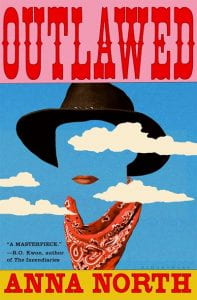The concept of ‘literary learning’ is one that speaks to my heart when it comes to pedagogy. It both validates my current teaching practices and our library collections while also challenging me to consider the use of diverse forms of literature across multiple curriculum areas, not just English. Storytelling is fundamental to what it means to be human (Falconi & Graber, 2019, p.1); why wouldn’t we use literature in all the curriculum areas?
As T. Tun mentions in her Discussion post (2023, May 15), literary learning is multi-platform – it takes place across and between different mediums and types of text. There can be no denying that out students require education in the use of online platforms, but also that, instead of being passive absorbers of content, and especially due to the presence of misinformation, they require critical literacy skills to be “multiliterate individuals” (Robertson, 2016, para.10). Young people are accessing diverse forms of information and literature but as Wolf (2014, pp.214-5) says, we are not having the conversations around what they watch or read that we do when teaching them how to read books.
Of all the topics covered in this course, two things stand out for me: that ‘literature’ encompasses far more than books that are chiefly accessible only to those with advanced literacy and education levels; and the idea that school libraries are “learning laboratories where old and new resources intersect” (Lamb & Johnson, 2010, p.81). These two ideas connect: school libraries need to resource more than print books in the collection; and as a future Teacher Librarian (TL), I need to be willing to be experimental and exploratory with different types of resources and teaching strategies that may help students connect with the curriculum and with reading for pleasure.
The modules, readings and my own blog posts have put me on my own, ongoing, literary learning journey. For instance, my understanding of what ‘literature’ means has been challenged to encompass any type of story, regardless of form/medium or genre. This is refreshing but at odds with the categories of fiction I’ve grown up with – even a visit to my local Dymocks reinforces this standard, with separate sections for ‘literature’ (the ‘canon’) and ‘fiction’ based on how hard it is to read the text, or how thought-provoking. This divide has, thankfully, become “increasingly slippery” (Ross Johnston, 2020, p.474). Instead, a broad definition of ‘literature’ flattens the hierarchy and recognises the need for students to be multi-literate: able to decode and interpret all the words and symbols around them (Ljungdahl & March, 2020, p.391).
When it comes to applying the concept of literary learning, the need for collaboration between the TL and subject teachers is vital. It is through the teaching of curriculum content that students can be exposed to diverse forms of literature, and taught the critical literacy skills to understand it deeply. The school library is both a physical and online space, but it is the physical space that students interact with the most. We can make resources available but on its own this does little good: the learning of literary learning must be actively modelled and taught. It requires a whole school approach, as many subject teachers are reluctant to teach literacy in classes that are traditionally seen as separate – sciences, art and music, technology, maths, even some humanities courses – especially at the senior secondary level.
————————–
References
Falconi, E.A. & Graber, K.E. (2019). Ethnographic approaches to storytelling as narrative practice. Brill.
Lamb, A. & Johnson, L. (2010). Divergent convergence part 1: Cross-genre, multi-platform, transmedia experiences in school libraries. Teacher Librarian, 37(5). (pp.76-81).
Ljungdahl, L. & March, P. (2020). Teaching writing in the classroom. In G. Winch, R. Ross Johnston, P. March, L Ljungdahl, & M. Holliday (Eds). Literacy: Reading, Writing and Children’s Literature. 6th ed. Oxford University Press.
Robertson, J. M. (2016). Influence of the digital age on children’s literature and its use in the classroom. In K. A. Munger (Ed.) Steps to success: Crossing the bridge between literary research and practice, OpenSUNY, https://milnepublishing.geneseo.edu/steps-to-success/chapter/7-influence-of-the-digital-age-on-childrens-literature-and-its-use-in-the-classroom/
Ross Johnston, R. (2020). Early childhood literature and engaged play. In G. Winch, R. Ross Johnston, P. March, L. Ljungdahl & M. Holliday (eds.), Literacy: Reading, Writing and Children’s Literature. 6th ed. Oxford University Press.
Wolf, S.A. (2014). Children’s literature on the digital move. The Reading Teacher, 67(6). (pp.413-417). https://DOI:10.1002/trtr.1235.

















Recent Comments
shannon.badcock
"Yes I wondered/worried about that. I find it hard to separate it from ..."
ederouet
"What a great looking blog! I love your widgets and use of categories ..."